Last Updated on March 25, 2024 by
Little Rann of Kutch situated in the Indian state of Gujarat, translates to ‘Small Desert’ and the first thing that comes to the mind with the word Desert is arid wasteland or undulating sand dunes. With the vast expanse of cracked mudflats extending to as long as the naked eye can see in the heat mirage, it would be hard to believe that there exists any form of life in the flat emptiness of the salt terrain.
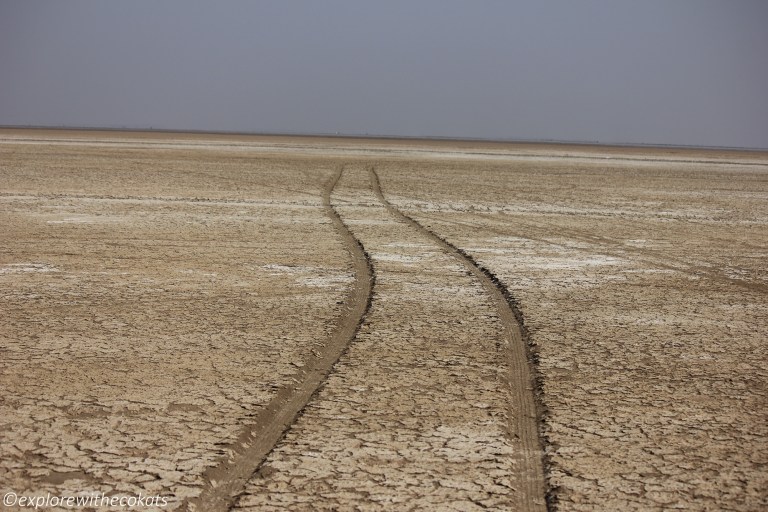
Even though called the Little Rann of Kutch or popularly known as LRK, it is certainly not little. This seasonal dry salt marsh occupies almost 5000 square kilometres much lesser than the Greater Rann of Kutch which covers 7500 square kilometres. With no stones or trees to perch in the vast barrenness, LRK is quite popular amongst wildlife enthusiasts for its bird diversity; birds that migrate from distant places to nest and rest. LRK is the last remaining home of the Asiatic wild ass. Read this detailed guide about Indian Wild Ass Sanctuary.
Table of Contents
A weekend in Little Rann of Kutch, Gujarat
I and a bunch of like-minded friends started our 170-kilometre journey from Ahmedabad towards Dhrangadhra (Jogad) by road. After a quick pit spot for food, we headed towards Eco Camp which arranged accommodation, food and a jeep safari.
We couldn’t resist the urge to stop at these beautifully luscious yellow fields of mustard swaying happily in the winter wind.
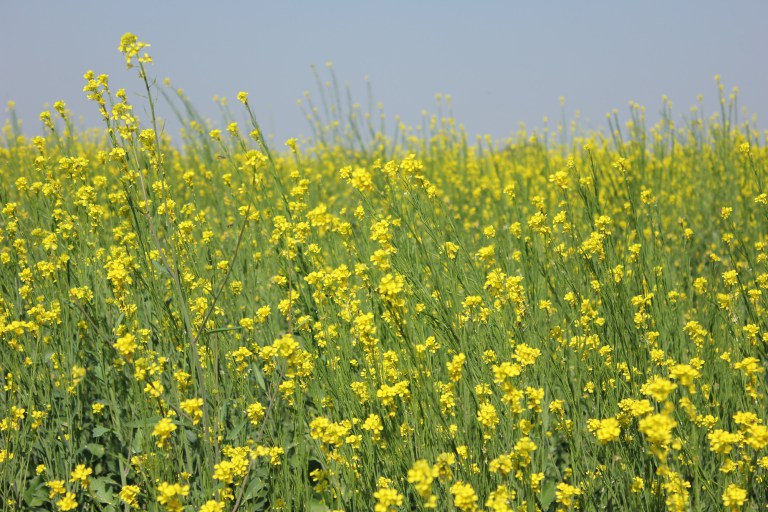
Reaching Jogad Eco-camp, Little Rann of Kutch
After reaching the Eco camps to find cute little huts made from mud and brick, an age-old combination that offers relief from the heat in summers and protection from extreme cold in winters. Painted in beautiful colours they were extremely inviting and comfortable. A quick fresh up and lunch later, we were into our jeeps excited for the afternoon safari. Eco-camps arranged safari permission so we did not have to wait in long lines to do so. Since this is a desert safari there are no entry and exit gates. However, tourists need a proper car and guide to take you in so as not to get lost in the Little Rann.
Also Read about my stay at: Rann Riders Dasada that has entry from Bajana.

Wildlife sightings over the weekend in Little Rann of Kutch
100 meters into the safari – which started right across the Eco camps, we sighted a Common Kestrel perched on a small rock which signifies the start of sanctuary boundary.
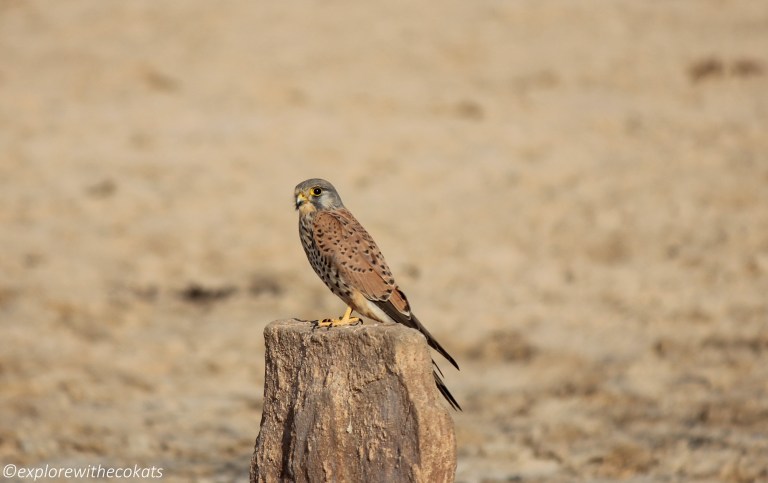
The pale yet beautiful Asiatic Wild Ass posed for our camera.
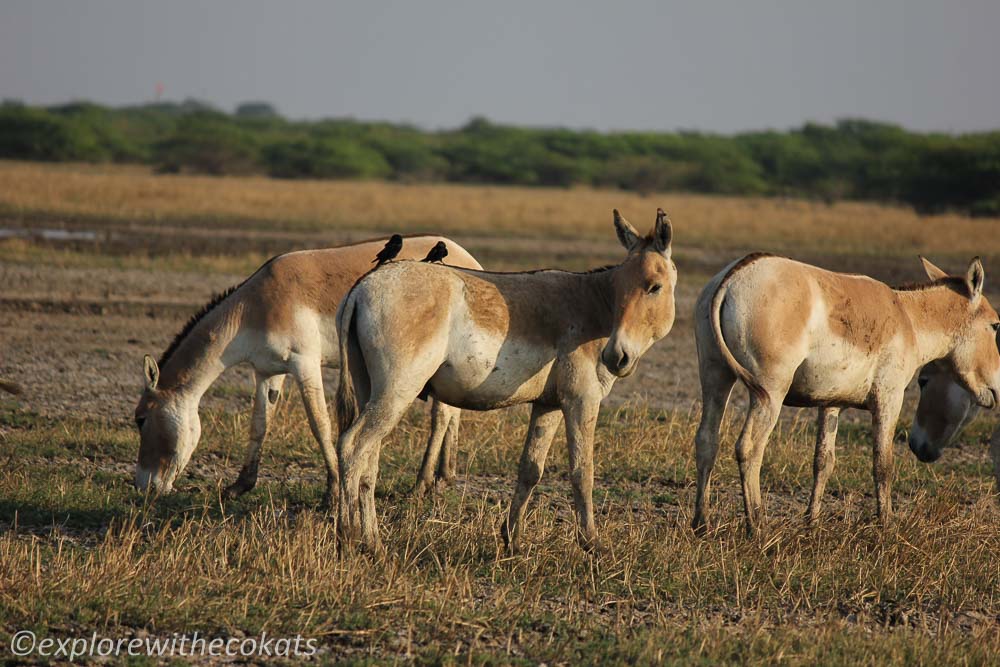
With binoculars and cameras in hand, we were ready to catch a glimpse of the famous Short eared owl, known to reside in the dried grass of Little Rann. Short eared owls are difficult to spot as they don’t perch. A quick flutter, inches away on the right side of the jeep and we saw him fly away far away. He turned to us to give us this record shot.
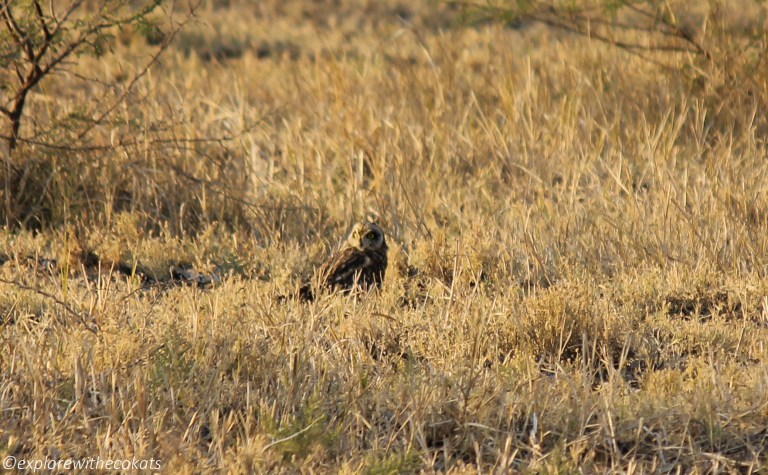
After a couple of small birds here and there and herds of wild asses, it was almost time for sunset. Our guide told us that it is perfect time to spot a hyena or fox and our eyes started straining to spot something. With almost dark evening, we gave up spotting anything. And in the light of jeep’s headlight, a movement – an Indian fox.
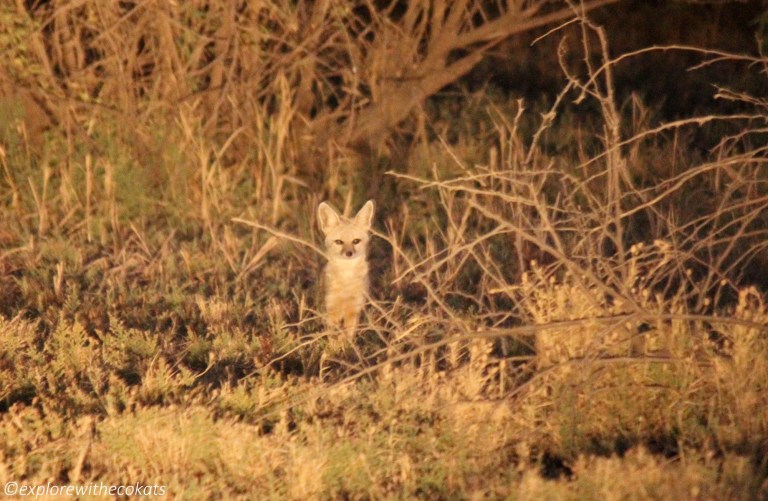
Tired, we came back to the cozy rooms for dinner and sleep before being awakened at 4am by jackal calls. We tried to go back to sleep to wake up for 7am safari. This Black Redstart was right outside the room to wish us a good morning.
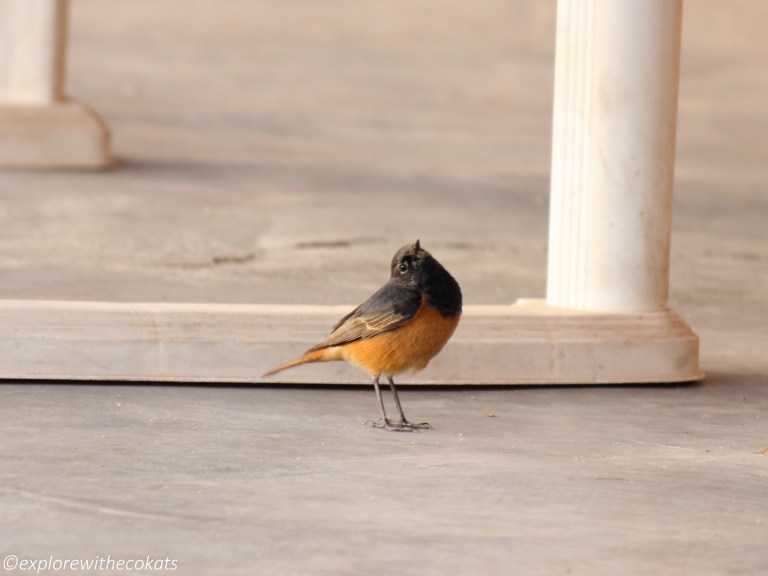
A flock of Greylag goose welcomed us to western part of Little Rann of Kutch and our only aim for the day was to catch a glimpse of the ultimate predator – The Peregrine Falcon! But before that we came across the Blue bull or Nilgai.
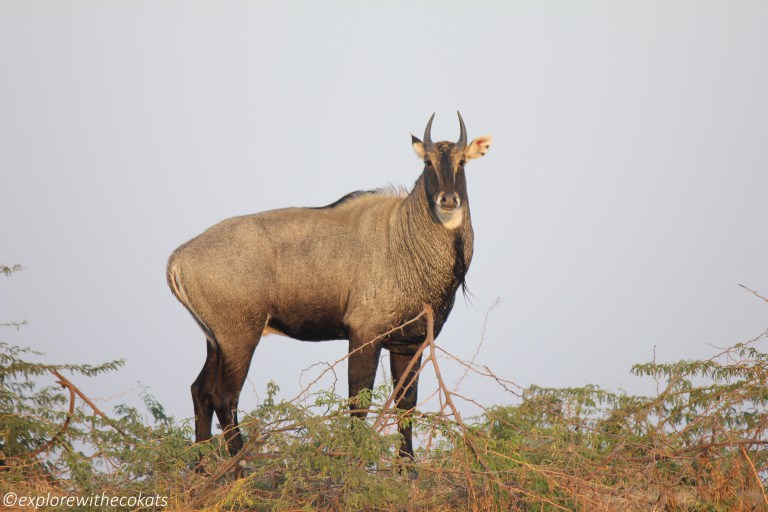
The beautiful Isabelline Wheatear
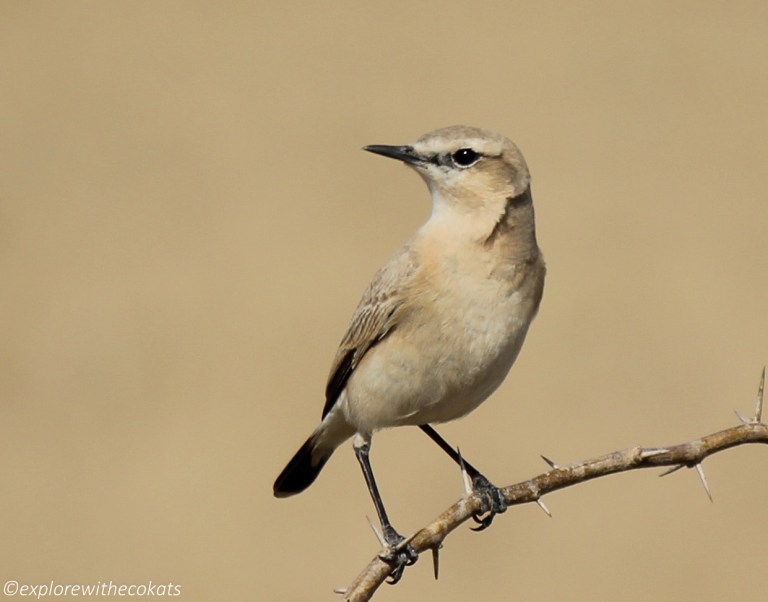
And the super agile Crested Lark
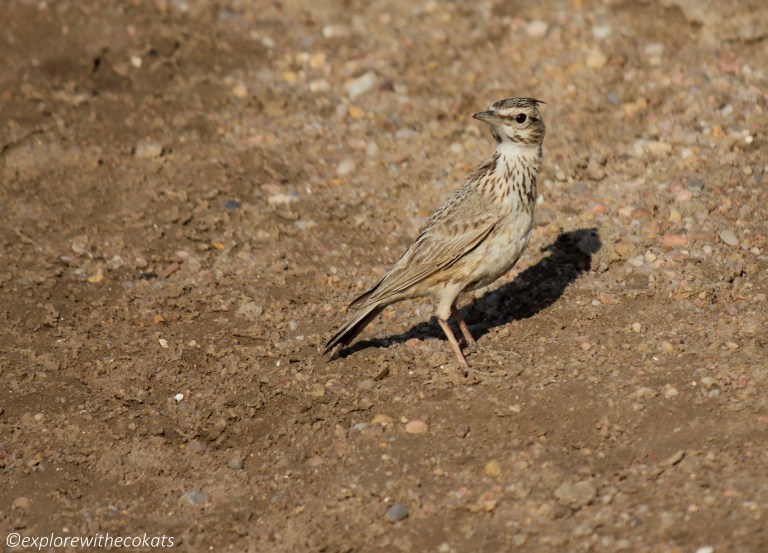
Our guide finally spotted the Peregrine almost 600-700 meters away on ground, resting in a shade of acacia tree. He flew away when we got a bit close to him. Once he settled a bit, we followed him to his next perch and to the next but never got close enough for a good shot. Had to finally give up the chase to go in the interior of Rann. The heat mirage of Rann was stunningly unbelievable.
We were left mesmerized by the amazing beauty of the barren land and could not help but imagine how amazing nature is!
- Our tour dates: 6-7 Jan 2018
- Total birds sighted: 85
- Total mammals sighted: 7
Tips for a sustainable trip to Little Rann of Kutch
- Wear camouflage colours that will easily blend with the desert – pale colours like beige, cream, light brown.
- Do not make noises when you spot a bird, it may get distracted and fly.
- Do not wear perfumes or body spray in the desert.
- Carry water and food for the long 3-hour safari. But do not dispose of plastic or leftover food in the desert. Keep it in your bag or jeep and dispose of it safely once you return to the hotel.
- Do not feed anything to wild animals.
- Try not to point out birds. There have been instances where raptors take notice of pointing towards small, weak exotic birds and hunt them down.
- And last and not least, respect the desert guide. If you do not spot a wild animal do not blame him, remember you’re in a natural ecosystem and not a zoo.
Read more from Gujarat
Enjoy Indian Wildlife? Read more wildlife posts here
- For Nilgiri tahr: Eravikulam National Park, Munnar
- For Sloth Bears: Satpuda National Park
- For tiger: Jim Corbett National Park , Tadoba National Park
- For Asiatic lion: Gir National Park
Pin this post!
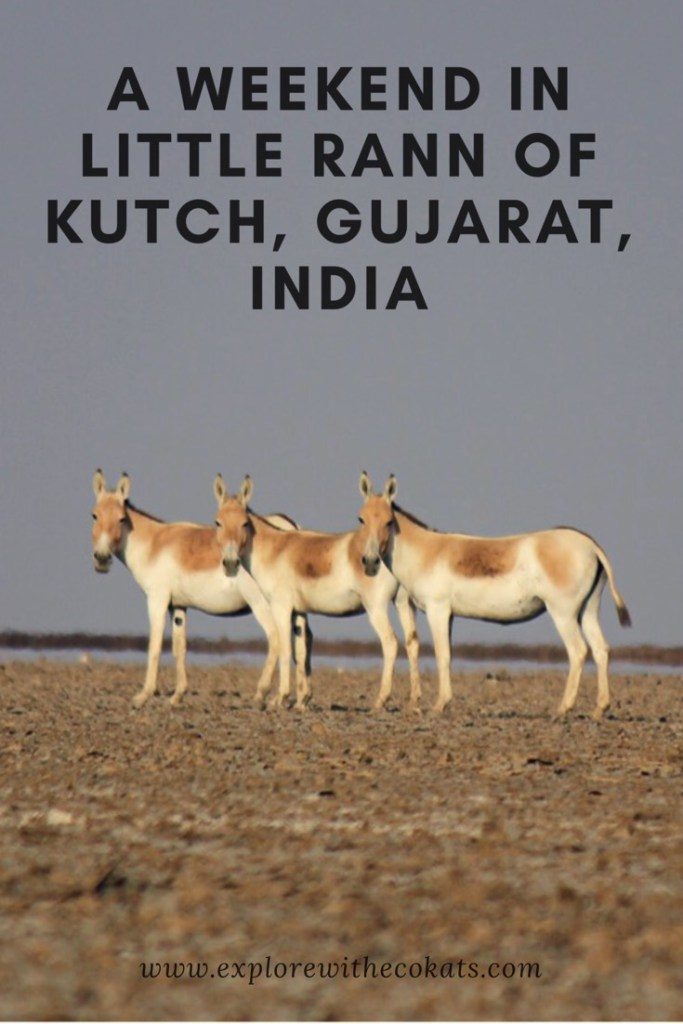


2 comments
Rann of Kutch is a treasure of Gujarat as it has much exotic wildlife and cultural things to do. I loved your stay at Ecocamps in which you stayed in natural mud – bricks huts and the interiors of it are very colorful and lovely. You have taken stunning shots of animals.
Hi. I loved this write-up. Got the information I was looking for. Thank you! I liked that you put in tips for sustainable travel